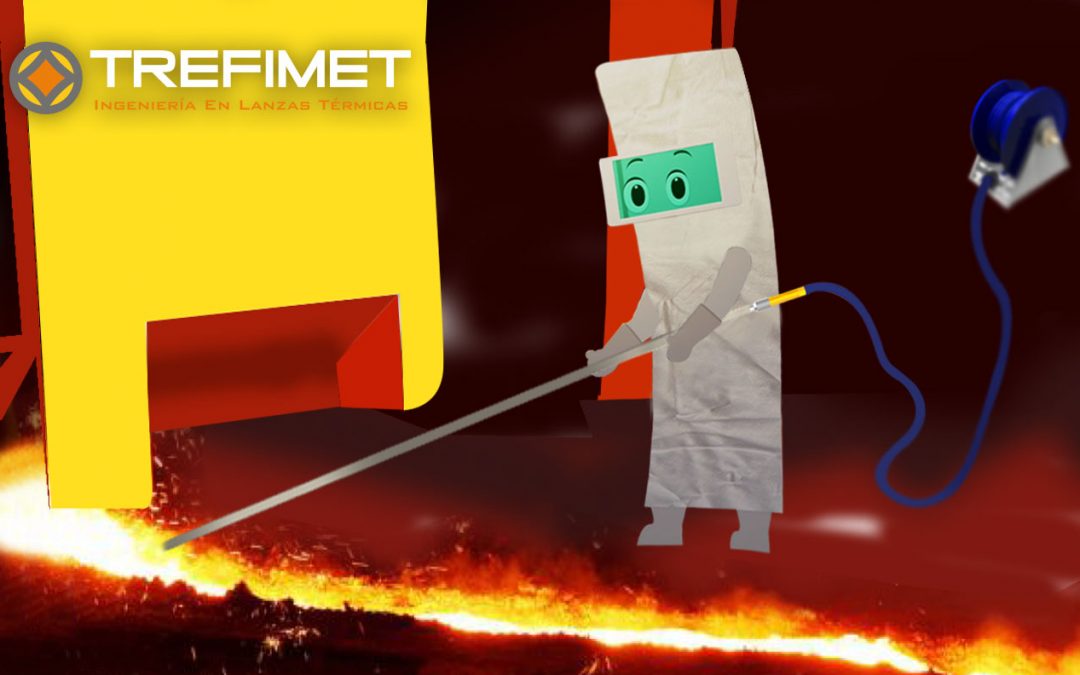Other applications for thermal lances
Undoubtedly, one of the most dangerous places in a foundry is the tapping area. The high temperatures and exposure to incandescent particulate material make this area very harmful for operators, not to mention the opening time, where the molten material flowing down the chutes reaches extremely high temperatures.
The foundry industry has put a lot of effort into this and many advances and developments have been implemented to increase the safety of operators and even move them away from this area, however, there are many injuries associated with the cleaning of chutes, where operators, after performing the tapping operation, must make great physical efforts for this process.
When the molten material leaves the furnace, it flows through the component known as the chute, which, like the environment in general, is at a lower temperature than the material being evacuated from the furnace, which causes part of this material to adhere to it, generating a layer of solid material and even, in many cases, small pockets at the exit of the passageway. In the process following the plugging of the passage, the operators are dedicated to remove this layer of solid (but still hot) material, and to displace the small blockages at the mouth of the passage, which often requires excessive physical effort and can lead to muscular injuries.
One possibility to deal with this situation is to use thermal lances to clean the chutes and to make cuts in the casings, which considerably reduces the pieces to be moved, even being able to clean them completely without the need for greater physical effort on the part of the operators. By having concentrated energy, it allows operators to carry out precision cleaning and cutting, minimising damage to the chutes and passage components when cleaning the chutes attached to them. Furthermore, thanks to this same feature, the operation can be done in just a few minutes, which speeds up the overall operation and reduces operator exposure and time spent in the tapping area.

